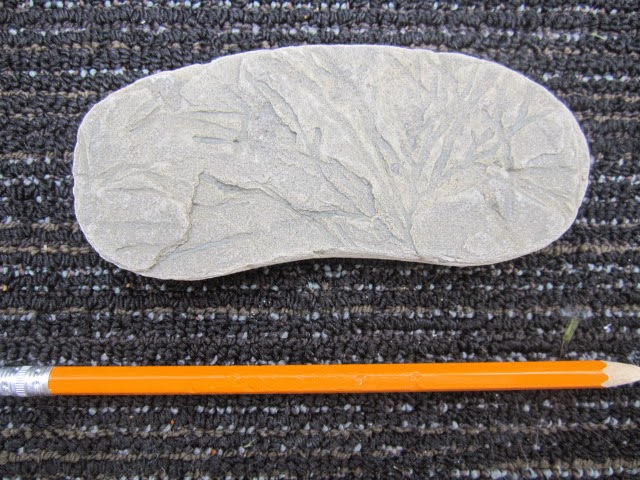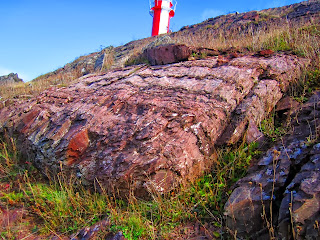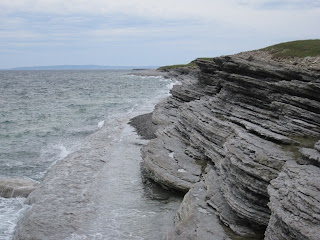I thought I would write about one of the journeys I made in 2011 to look for Howley's rocks. He spent some time on the Port au Port and St. George's Bay area in 1874 "studying out the complicated geological structure of that region".
For years I was interested in going to Long
Point, just looking at the needle like feature on the 1:50 000 topo map enticed
me to go out to the very tip just to see…I'm glad Howley was there too, it's an easy place to follow in someone's footsteps!
There’s a dirt road beyond Black Duck Brook
out to a place called Blue
Beach. It’s a summer fishing community, lots of
cabins and trailers, piled on top of one another. Beyond Blue Beach
there’s a flat trail that follows the shore through coastal meadows or you can
amble along the shore for a while until the limestone ledges crop out. There’s an electric light house at the end of
the trail then you can climb down to the rock and stroll out to the tip.
I kept going as far as I could to the point where the water started flowing over the
rocks.
Standing there at the tip as far
as I could go I felt I was at the end of the earth, the broad Gulf of St. Lawrence on one side and the
imposing Lewis Hills on the other.
Howley in his memoirs remarks
“As previously stated, the natural rock
sculpture of the limestone rock is in many places very striking. This is caused
by the wearing away, through atmospheric influence, of the more yielding
portions of the strata, leaving the harder parts intact."
I’ve decided to post one of the finished paintings.
This is a painting of a section of the limestone ledges along the eastern side of Long Point. It's 30 inches x 30 inches, acrylic on canvas. I was really intrigued by the different shapes and subtle changes in colour of each of the layers, (pinks and yellows show up here and there) and especially the dark insides of the cracks (if that's the right word). The more I looked the more I saw. There seemed like a whole other world going on in these sections.
Howley states "Fossils of the Lower Silurian age are abundant and well preserved in most of the rocks of Port a Port...At the extreme end of the Long Point facing the open gulf the limestone ledges are filled with ancient corals, sponges and such like fossils and some of the surfaces exhibit the trails of some animals, probably trilobites, which left deep tortuous grooves in the mud, crossing and recrossing each other many times."
.JPG)
So there was a whole other world going on in these rocks or at least the remains of one that existed some 420 million years ago.
*************************************
I was having trouble finding my way around this blog but I know now a few things. If anyone would like to make a comment, click on "no comment" and then there will be a text box to make a comment, then below that is a drop down box and choose Name/Url. Hopefully that will work!








.JPG)












